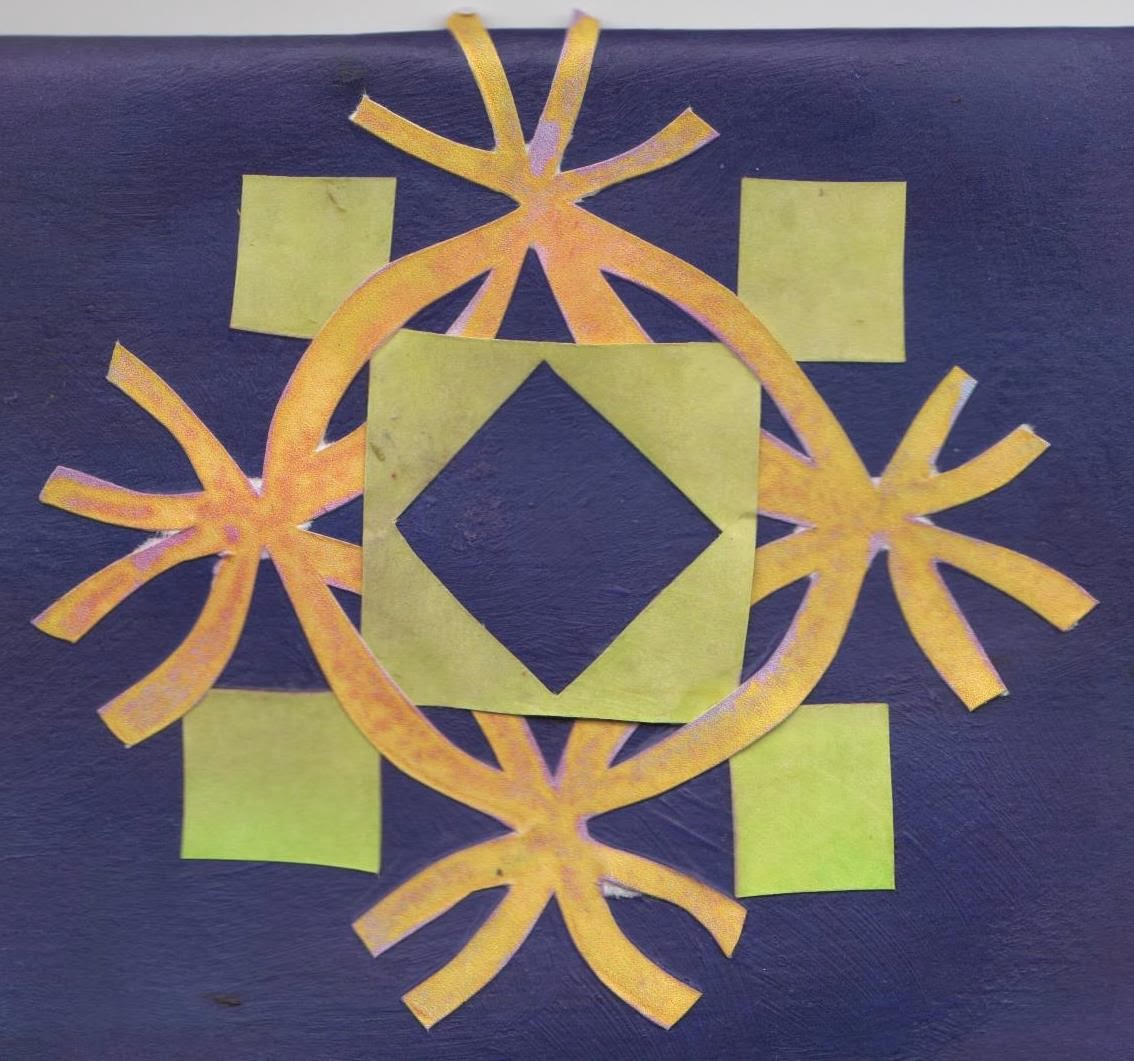Design Sheet B
This set of exercises explores differences in scale, arranging and/or interlinking shapes to make new units or borders. I worked to one of my A3 sized sketchbook pages and added another A3 page as an extension which I'll be able to fold in when a re-attach the page to the book.I continued to use my 2 motifs from my original research collection - a danish or patchwork style star and the star shapes I generated from images of the new Birmingham Library.
 |
Exercise 1 involved making a simple design using small and large versions of the same shape. I have also used both positive and negative versions of these.
Exercise 2 involved using these 2 different sized shapes to make a repeat pattern.
 |
| Border 1 |
Exercise 3 then involved a play to use my shape to make a continuous border and navigate this around a 90 degree corner, and here are the 2 versions I came up with.
 |
| Border 2 |
 |
| Linking Border |
I then moved on to Exercise 4 which involved interlinking shapes to make a linking border. Due to the frondy bits on my shape this made for quite a congested and less than attractive effect. So I spaced them out by adding a different shaped link which was cut from part of a negative shape of the larger scale version, which I think proved much more successful.
Exercise 5 was concerned with linking 2 different shapes and/or scale in an interesting way. I linked a shape derived form my Danish Stars to link with my Birmingham Library stars
 |
| Linking two different shapes 1 |
 |
| Linking two different shapes 2 |
 | |||
| Linking two different shapes 3 |
Exercise 6 - Making a new shape from old
My Birmingham star was cut into a different shape derived form the Danish Star. Swapping the colours around makes for quite a different effect.
 |
| Original shape |
 |
| Positive and Negatives of new shape in different colours |
My last experiment involved placing the negative shape of my star over a printed sheet - a kind of reverse of the above process in. This produces a layered effect which is akin to my observations of the actual library as there are a number of layers of variations of the star shapes as I have studied with my drawing.
As you can see these exercises have meant a whole lot of cutting out of individual shapes and I have to confess there were times when I rather regretted my choice of shape which is rather fiddly to say in the least - but I feel it was worth the effort as I think it makes for some interesting design developments.
Time logged for this activity - 9.5hours








